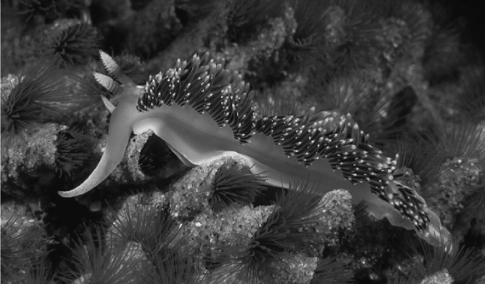Use the information to answer the following question.
The nontaxonomic term sea slug encompasses a wide variety of marine gastropods. One feature they share as adults is the lack of a shell. One might think, therefore, that they represent defenseless morsels for predators. In fact, sea slugs have multiple defenses. Some sea slugs prey on sponges and concentrate sponge toxins in their tissues. Others feed on cnidarians, digesting everything except the nematocysts, which they then transfer to their own skins. Whereas the most brightly colored sea slugs are often highly toxic, others are nontoxic and mimic the coloration of the toxic species. Their colors are mostly derived from pigments in their prey. There are also sea slugs that use their coloration to blend into their environments.
This nudibranch, a type of sea slug, has many reddish cerata on its dorsal surface, as well as two white-tipped rhinophores located on the head.
Which structure do sea slugs use to feed on their prey?
Definitions:
Goodness of Fit
A term in developmental psychology that describes how well an individual's temperamental traits match the expectations and demands of their social environment.
Bowlby
A British psychologist best known for developing the theory of attachment, which suggests that children are biologically predisposed to develop attachments to caregivers as a means of survival.
Contact Comfort
The psychological and physical benefits derived from touching and being in close contact with others, highlighted in attachment theory and studies of infant development.
Oral Satisfaction
Fulfillment of needs or desires through oral activities, often discussed in the context of psychoanalytic theories of early childhood development.
Q1: Cottonwood, aspen, and willow trees have beige
Q15: Use the following information to answer the
Q16: What is the overall charge on the
Q28: What is the advantage of having small,
Q30: Sexual reproduction in eukaryotes increases genetic variation.
Q54: If plaque on teeth is actually a
Q62: Use the following information to answer the
Q63: Most land-dwelling invertebrates and all of the
Q67: All animals, whether large or small, have
Q79: Use the following information to answer the